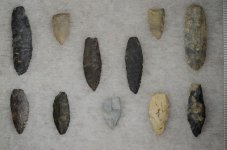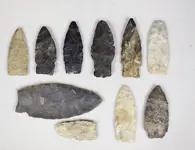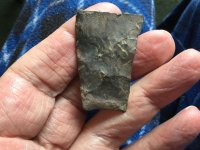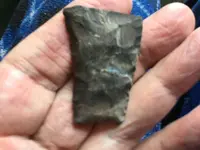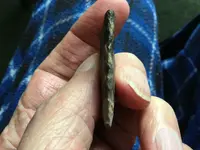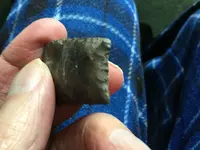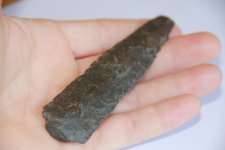joshuaream
Silver Member
There was an interesting post that brought up some of the Lanceolate forms from Ohio. Not as much scientific info in this thread, just some examples I have scattered around my collection. A hodgepodge of old and new pictures, eventually I’ll get the actual pieces sorted into some type of grouping.
I firmly believe that some of these are post-fluted point paleo items related to their name-brand western forms (Agate Basin, Angostura & Cody Complex), and I believe some of them are likely related to Early to Mid-Archaic or even later form more common in Missouri & Illinois, and then some are likely introductions or evolutions from the East that extend into the Late-Archaic or even more recent than that.
Maybe it’s anecdotal vs studied fact, but one of the unique things is that they are predominately made from one of the black cherts from Ohio or WV, even when found in areas where other flints are more common.
Please feel free to post any you have, or ideas about them.
FWIW- You'll probably see some edits to this thread. I am going to insert pictures, and then add some comments above the pictures that are comment worthy.
I firmly believe that some of these are post-fluted point paleo items related to their name-brand western forms (Agate Basin, Angostura & Cody Complex), and I believe some of them are likely related to Early to Mid-Archaic or even later form more common in Missouri & Illinois, and then some are likely introductions or evolutions from the East that extend into the Late-Archaic or even more recent than that.
Maybe it’s anecdotal vs studied fact, but one of the unique things is that they are predominately made from one of the black cherts from Ohio or WV, even when found in areas where other flints are more common.
Please feel free to post any you have, or ideas about them.
FWIW- You'll probably see some edits to this thread. I am going to insert pictures, and then add some comments above the pictures that are comment worthy.
Upvote
8



